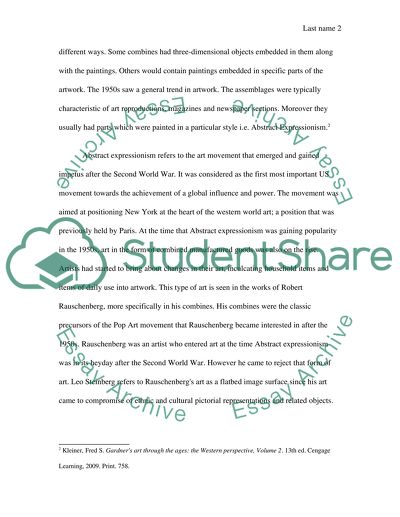Cite this document
(“Robert Rauschenberg's tactics Essay Example | Topics and Well Written Essays - 3000 words”, n.d.)
Retrieved de https://studentshare.org/visual-arts-film-studies/1390174-major-research-essay
Retrieved de https://studentshare.org/visual-arts-film-studies/1390174-major-research-essay
(Robert Rauschenberg'S Tactics Essay Example | Topics and Well Written Essays - 3000 Words)
https://studentshare.org/visual-arts-film-studies/1390174-major-research-essay.
https://studentshare.org/visual-arts-film-studies/1390174-major-research-essay.
“Robert Rauschenberg'S Tactics Essay Example | Topics and Well Written Essays - 3000 Words”, n.d. https://studentshare.org/visual-arts-film-studies/1390174-major-research-essay.


